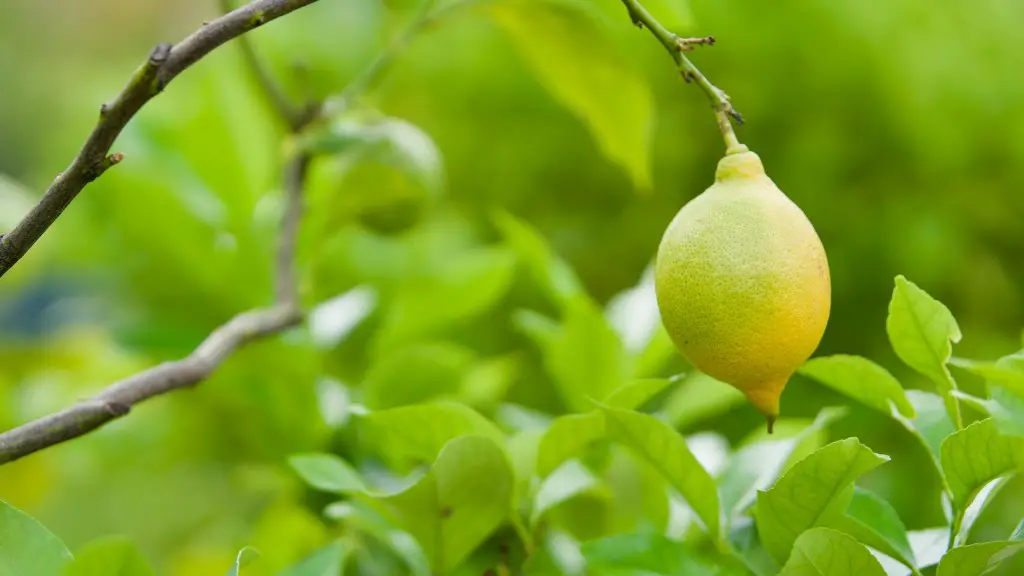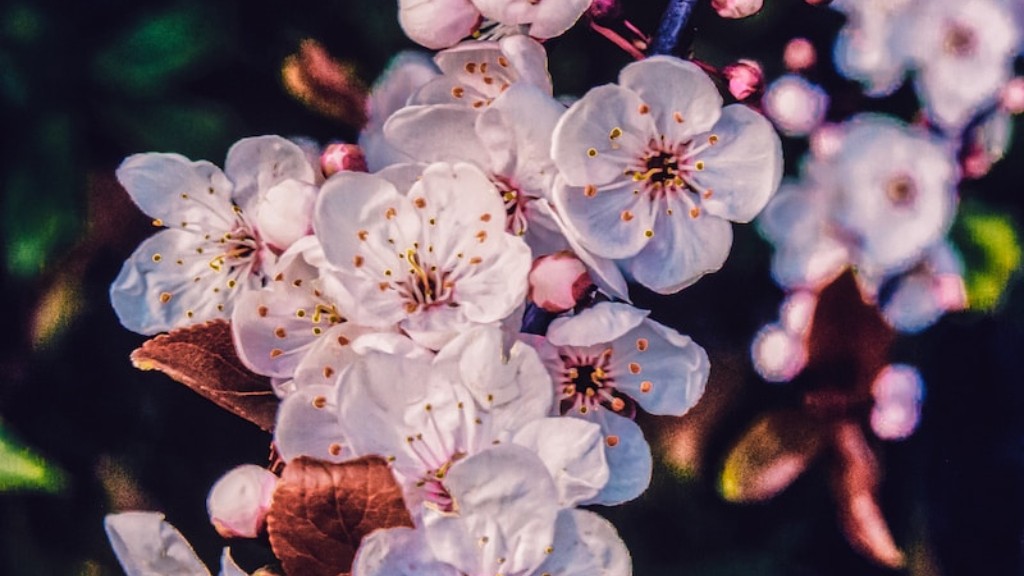Can we plant lemon trees at home? The short answer is yes! Growing citrus trees indoors has become a popular option for many green-thumbs due to its advantages and benefits. Citrus trees generally require very little maintenance and care as long as it is adequately watered and placed in a sunny location. For example, the best place for lemon trees is near a window or balcony since these plants need direct sunlight for six to eight hours a day. Furthermore, lemon trees can survive temperatures that go as low as 45 degrees Fahrenheit.
Leaving aside the aforementioned factors, the ideal time of the year to plant lemon trees is during the spring. This should be taken into consideration when choosing a pot and soil to ensure the pot can adequately support the size and shape of the tree. It is also vital to pick a good quality, well-drained potting soil in order to give the lemon tree the best environment it can get. This can be done by mixing the soil with compost, sand, and perlite. Additionally, when watering the tree it is important to not over-water is nor let it dry out since too much or too little moisture can damage the roots.
Being aware of these tips is key to becoming a successful citrus tree home grower. But when considering how to maintain the tree in the long run, be aware that pruning and fertilizing can go a long way. The pruning is important since it helps maintain the size and shape of the plant, as well as allowing for sunlight to reach the other parts of the tree more freely. Fertilizing is also necessary since it boosts growth and keeps the lemon tree healthy.
Finally, by following these steps, home growing a lemon tree can be a rewarding experience. One should always remember to water the tree regularly, but not excessively. Taking adequate care of the lemon tree, providing it with the right amount of sunlight, and the best soil, will ensure a healthy, thriving lemon tree. Additionally, due to its resilience and rather low maintenance, the lemon tree is a must-have for any home gardener looking to grow different, healthy, and delicious products.
Pruning Requirements for Lemon Trees
Pruning is key for any successful indoor lemon tree grower and should be done regularly. Pruning should not be overly-intense since it could damage the tree and stunt its growth. Instead, one should look to prune the lemon tree to maintain its size and shape. This includes trimming side shoots, dead or dying branches and leaves, as well as any damaged parts. Additionally, pruning any weak or too long branches and shoots can help improve air circulation, ensuring direct sunlight and reducing pest infestations.
When performing the pruning, it’s important to use sharp pruning shears to cut the wood. It is also important to clean the shears after with rubbing alcohol to prevent any pests or diseases from spreading to other parts of the tree. Furthermore, one can use pruning paste to seal the cut surfaces of the tree and protect it from pests and diseases.
When pruning, one should pay attention to maintain the natural shape of the tree. Additionally, pruning out any branch that extends differently compared to the rest can help improve the tree’s aesthetics and the quality of the fruits. Finally, it is important to note that pruning can greatly affect a lemon tree’s growth, so it is wise to refer to an experienced gardener or an authoritative source to make sure the pruning is done correctly.
Citrus Trees Fertilizer Requirements
Fertilizing the citrus trees plays a major role in its growth and health. Depending on the stage of the plant’s growth, different types of fertilizer will be needed. When following a fertilizer schedule, it is important to consider the amount of fertilizer, the type, and the periods. The amount of fertilizer can vary from one lemon tree to another, so one should always refer to the instructions found in the store products.
The type of fertilizer to use is also important for a successful lemon tree growth. In general, citrus trees require a fertilizer with a more balanced mix of nitrogen, phosphorus, and potassium. It is also important to make sure the fertilizer has micronutrients such as zinc, manganese, iron, and magnesium. Additionally, one should not use any type of fertilizer that has weed killer.
Finally, knowing when to fertilize the lemon tree is one of the most important details to consider. Commonly, lemon trees should be fertilized once a month during the spring and summer months. There is no need to fertilize during the winter. As mentioned, this can vary depending on the individual soil, size of the lemon tree, and the growth stage of the tree.
Tips for Choosing the Ideal Pot and Soil for the Indoors Lemon Tree
Selecting the right pot and soil can determine the successfulness of growing an indoor lemon tree. Due to space limitations indoors, one should choose a pot that is adequately sized and capable of supporting the size and shape of the lemon tree, especially during the growth fire. The pot should also have adequate drainage holes since excess water can damage the tree if it cannot pass through the soil.
When selecting the soil, it is important to look for a well-draining soil with enough organic material for adequate nutrition. While some growers use regular soil, the best option is to find a good quality potting soil which can be mixed with compost, perlite and sand. Afterwards, before placing the lemon tree in the pot, make sure to add fertilizer to the soil since it will enrich the soil and boost the tree’s growth.
Finally, it is important to note that different types of lemons require different types of soil and can adapt to a wide variety of pot sizes. To ensure the best results, one should look for specific recommendations when shopping for the right pot and soil. In addition, many stores offer a wide range of citrus specific potting soils and fertilizer which can greatly benefit the home lemon tree grower.
Creating the Ideal Environment for the Lemon Tree
Creating the right environment for a lemon tree is a critical part for its growth and fruit production. As mentioned before, location is key to the success of the indoor lemon tree. An area in close proximity to a window and receiving enough sunlight – six to eight hours a day – is ideal for the lemon tree. Low temperatures such as below 45 degrees Fahrenheit are also tolerated.
In addition, to give the lemon tree the best environment possible, proper humidity and ventilation are necessary. The ideal humidity for a lemon tree is around 50%, although it can vary depending on the climate. Ventilation is also important for the lemon tree in order to reduce any fungal diseases and pest infestations.
For the ventilation, one should get a fan to circulate the air. If a fan cannot be used, then it is wise to open the window to ensure the lemon tree is getting enough air circulation. Furthermore, it is important to ensure that the area away from the tree is insect and pest free since being near any pests can easily damage the lemon tree. Lastly, making sure the area is free of any chemical products and sprays will also help keep the tree healthy.
Pests and Disease Management for the Indoors Lemon Tree
Pests and diseases can be one of the main challenges of home growing citrus trees. Many pests such as spider mites and scale can damage the leaves and fruits of the tree and stunt its growth. Additionally, fungal diseases can take a toll on the tree, significantly reducing its lifespan. For this reason, it is important to use preventative measures to keep the tree safe from both of them.
When it comes to treating pests and diseases, many home growers rely on a mix of natural products, as it is one of the safest options. For example, natural products such as neem oil and sulfur can do an adequate job for getting rid of pests. Additionally, these natural products can also help against fungal diseases, reducing the affect of drought and salinity on the tree.
Using soil and leaf tests can also help identify potential pests, fungi, and other nutrient deficiencies on the tree. This can give home growers the necessary advances to quickly treat the problem and help restore the tree’s health. For example, a soil test can determine the pH levels of the soil; if the results are too low, then the soil needs to be treated to restore the pH levels. Additionally, it is important to be aware of signs such as yellowing or wilting leaves, which could signify a fungal attack or nutrient deficiencies.
Finally, by following the mentioned steps and making sure to detect pests and diseases on early stages, home lemon tree growers have a greater chance of keeping their tree healthy and safe. Additionally, one should remember to adequately prune and fertilize the tree regularly and make sure to keep the area free of any pests or diseases. Doing this can significantly increase the life of the lemon tree and ensure good quality fruits.





